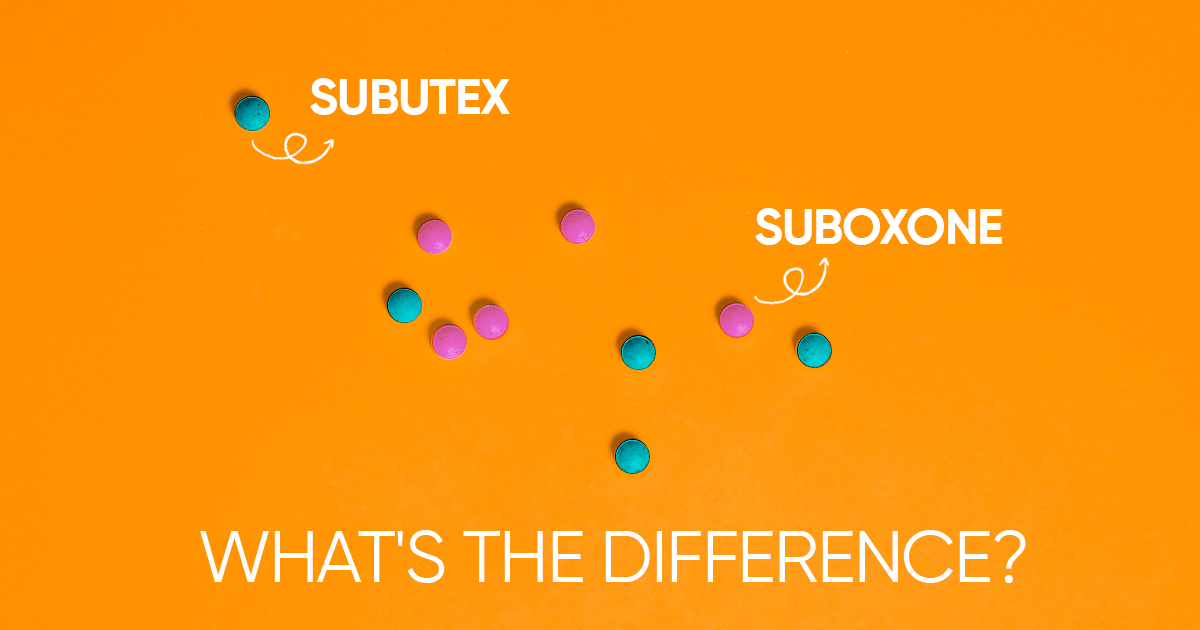
Approved by the Food and Drug Administration (FDA) in 2002, Subutex vs Suboxone represent two types of medications that treat opiate addiction. Before the passage of the Drug Addiction Treatment Act of 2000, opiate addicts treated their addictions with methadone. After the enactment of the Drug Addiction Treatment Act of 2000, physicians that received training and certification from the Center for Substance Abuse Treatment had the legal right to prescribe buprenorphine to treat opiate addictions.
Both Subutex and Suboxone contain buprenorphine to treat opiate addicts, but just Suboxone contains an extra ingredient called naloxone The primary difference between Subutex vs. Suboxone is the extra ingredient of naloxone in the opiate treatment drug called Suboxone.
The addition of buprenorphine as an ingredient in both opiate addiction medications reduces the likelihood of a patient abusing either drug. According to the FDA, methadone represents a Schedule II drug, while buprenorphine is a schedule III controlled substance. The FDA states more than 16,000 physicians have earned the proper credentials to prescribe both Subutex and Suboxone.
What is Buprenorphine?
Previously administered as a pain reliever, buprenorphine binds with opiate receptors in the brain that trigger euphoric sensations. Although not considered a full opiate, the drug acts like a full opiate that masks the typical euphoric sensations, which reduces the physical tool withdrawal takes on the body. Buprenorphine also reduces the desire to take opiates, which helps patients recover during the detoxification process.
The gentler treatment of an opiate patient keeps the patient safe during the detoxification process. Buprenorphine reduces the possibility of a patient relapsing, as well as experiencing difficulty coping with withdrawal symptoms. One of the greatest advantages of the switch from a methadone-based drug to a buprenorphine-based drug is the gentler drug allows a patient to focus on recovery, without having to deal with the distractions caused by cravings and withdrawal symptoms.
How Does Subutex Work?
Knowing how Subutex works helps you understand the difference between Subutex vs. Suboxone. Like Suboxone, Subutex tricks the brain into functioning like it does when a real opiate such as heroin is consumed. However, there remains a slight possibility that a patient can abuse Subutex, especially if an opiate addict crushes the pills and then snorts them or injects them intravenously with a liquid.
How a physician administers Subutex plays a significant role in determining the effectiveness of buprenorphine to mask the euphoric sensation that is commonly associated with the use of real opiates. The most effective method for administering Subutex is by placing it under the tongue and allowing the drug to absorb slowly into the body. Oral administration causes the drug to enter the body much faster, which inhibits the masking benefit of taking Subutex. A single daily dose placed under the tongue for absorption typically takes between three and four hours for the drug to reach its maximum effectiveness.
Certified physicians must monitor the quantity of Subutex taken to prevent a high dose from mimicking the high generated by a true opiate.
How Does Suboxone Work?
Even the slightest potential for the abuse of Subutex led researchers to develop a second faux opiate drug to treat addiction. Suboxone creates the same mimicking effect as Subutex, as well as fights the negative side effects of withdrawing from an opiate addiction. Physicians prescribe Suboxone as a combination of film or tablet, which contains both buprenorphine and naloxone. The addition of naloxone eliminates the euphoric high that is still somewhat present when taking Subutex.
Prescribing Suboxone in film or tablet form prevents the development of instant and intense withdrawal symptoms. Physicians must monitor patients to ensure they do not inject the drug, which can trigger highly distressing withdrawal symptoms.

What’s the Difference Between Subutex vs Suboxone?
The most significant difference between Subutex vs. Suboxone is the addition of naloxone in Suboxone. Both drugs are considered brand names for the treatment of opiate addicts. Although both drugs contain buprenorphine, the addition of naloxone in Suboxone helps addicts avoid painful withdrawal symptoms, without falling into another pattern of opiate abuse. Researchers developed Suboxone to improve the opiate treatment process. Although Subutex remains an effective drug for treating less serious opiate addictions, when a patient is vulnerable to experiencing distressing withdrawal symptoms, physicians often prescribe the most effective Suboxone.
Suboxone also is recommended for patients that face the potential for relapsing back into an opiate addiction.
Which is more effective between Subutex and Suboxone when it comes to treating opiate addicts? Both medications contain buprenorphine, which limits painful withdrawal symptoms and mimics the euphoric sensation felt when taking a real opiate such as heroin. The slight potential for abuse when taking Subutex represents the only downside of the drug. In response to the slight potential of abuse, researchers developed a second medication called Suboxone. In addition to buprenorphine, Suboxone also contains naloxone, which eliminates the possibility of the craving that leads to abusing the medication.
What is the verdict between Subutex and Suboxone when it comes to fighting an opiate addiction? The answer is Suboxone has a slight advantage over Subutex.
Addiction Treatment in Southern California
Treating an opiate addiction involves much more than simply prescribing Subutex vs Suboxone. Physicians should prescribe approved medications as part of an opiate treatment program. Opiate addicts benefit from therapy and other types of medical care to help them make the transition from an addict to someone who lives a clean and sober lifestyle.
Entering a formal addiction treatment center can make the difference between eliminating an opiate habit and eventually returning to the opiate addict lifestyle. An addiction treatment center is run by licensed and certified healthcare professionals that specialize in helping opiate addicts shake an addiction. In addition to the support of experienced treatment specialists, an addiction treatment center offers peer support in the form of group therapy sessions. Peer support is a highly effective tool that encourages opiate addicts to fight through the difficult times experienced during a treatment program.
Before you enter an addiction treatment center, be upfront with your physician when it comes to revealing what other types of illegal drugs you currently use. If you’re looking for help with managing long-term sobriety in southern California contact Anchored Tides Recovery at 866-600-7709.































